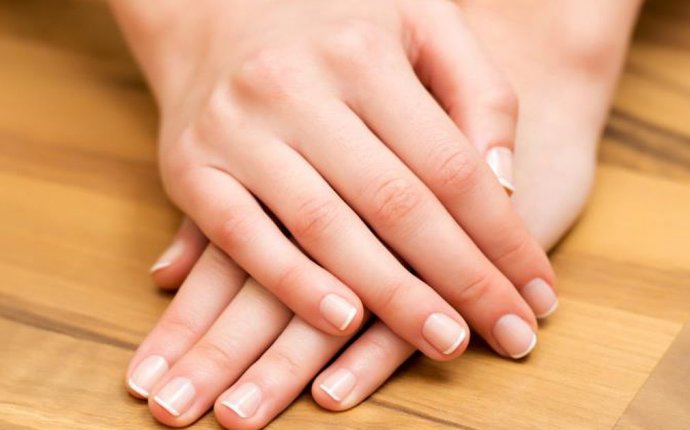
Nail health and nutrition
He says he sometimes tries to guess if a person has anemia by looking at his or her nails. He explains that pale, whitish nail beds may indicate a low red blood cell count consistent with anemia.
While most of Fox's patients don't come in to report nail problems, he routinely checks patients to make sure they have healthy fingernails. "The nails offer many little clues to what's going on inside you. Lupus patients get quirky, angular blood vessels in their nail folds. Psoriasis starts in the nails up to 10% of the time" and causes splitting and pitting of the nail bed.
He lists the following 10 examples of nail changes that could indicate a serious medical condition.
|
A Guide toHealthy Fingernails:
|
|
|
Nail Appearance |
Associated Condition |
|
White nails |
|
|
Yellowish, thickened, slow-growing nails |
|
|
Yellowish nails with a slight blush at the base |
|
|
Half-white, half-pink nails |
|
|
Red nail beds |
|
|
Pale or white nail beds |
Anemia |
|
Pitting or rippling of the nail surface |
|
|
"Clubbing, " a painless increase in tissue around the ends of the fingers, or inversion of the nail |
Lung diseases |
|
Irregular red lines at the base of the nail fold |
|
|
Dark lines beneath the nail |
|
'Rarely the First Clue'
But can a doctor truly detect undiagnosed heart disease or kidney problems by looking at your nails? American College of Physicians spokesman Christine Laine, MD, MPH, says it's not likely. She doesn't dispute the connection between nails and disease, but she cautions, "Nail changes are rarely the first clue of serious illness. In most instances, patients will manifest other signs or symptoms of disease before nail changes become evident. For example, it would be unusual that nail clubbing was the first thing a patient with emphysema noticed. Breathing difficulty probably would have been present already."
Continued
In addition, Laine, who is senior deputy editor of the Annals of Internal Medicine, notes that certain illnesses may cause nail changes in some patients but not in others. "For example, not all people with liver disease develop white nails, " Laine tells WebMD. The reverse is true as well - not everyone with white nails has liver disease. "In the absence of other signs or symptoms of disease, I would be reluctant to launch a complex, expensive work-up for systemic disease solely because of nail findings."
Fox agrees there is no need to run to the nearest cardiologist if your nail beds turn red. "It could very well be from nail polish, " he says. Before assuming the worst, it's important to look at more common explanations, such as bruises, bleeding beneath the nail, and fungal infections. However, it's worthwhile to be vigilant about maintaining healthy fingernails so that you'll be alert to any potential problem.
When to See a Dermatologist
When healthy fingernails begin to change color or texture, one of the most common underlying causes is, which can cause the nails to crack, peel, and change color and texture. These infections often prove difficult to treat and may require professional help, including prescription antifungal medications. Fox says it's best to see a dermatologist if symptoms persist, especially if the nails start to dislodge from the base or you experience pain and swelling.
Be alert to changes in texture, shape, or color that aren't due to a bruise or fungal infection, including irregular growth, pitting or holes in the nails, dark brown streaks beneath the nail and cuticle, or long-standing warts on the nail bed. Any such color change to previously healthy fingernails is cause for concern. According to Lior, such changes can indicate skin cancer. "Warts around the nails have a tendency to develop into squamous cell cancer, " she tells WebMD. "If patients see a dark discoloration involving the cuticle, then we worry about melanoma, " the deadliest form of skin cancer.













